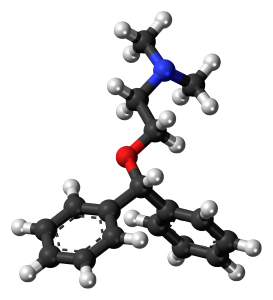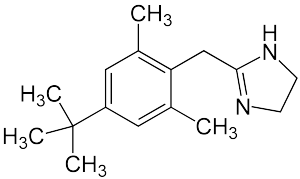There is of course a whirling controversy over access to, and regulation of illegal drugs and substances. What many people don’t realize is that while these particular substances have been singled out, they are by no means the worst things we can use to get high. Ironically, many of these things can be found at your local supermarket or pharmacy, and can be purchased without a prescription. We do not promote the use of any of these, this is for educational purposes only.
10. Diethyl Ether

More commonly known as simple ‘ether’ has been long used as a medical anesthetic. Equally long is its history of recreational use that spans the globe from Russia through France and into the good old US of A. It affects your body in much the same way as alcohol but it has a less lasting effect. The biggest plus? It’s dirt cheap.
So why aren’t we all ordering shots of ether at the local watering hole? It’s pretty dangerous. The material is highly flammable and should be handled with care.
9. Dextromethorphan (Robitussin)

Robitussin has garnered a bit of a bad reputation. It was originally based around Codeine as the active ingredient and cough suppressant, but we know now that Codeine is highly addictive. Dextromethorphan (DMI) was created as a non-addictive substitute. When used recreationally, DMI can induce powerful euphoria, intensely elevate mood, highly increase awareness, and cause vivid dream-like states. Other not so sought after side effects include disorientation, confusion, altered perception of time, decreased sexual functioning, and hallucinations.
While many users liken “robo-tripping”—as the experience is called—to being drunk and high at the same time, high doses can impair language, memory, and judgement. Additionally, while DMI isn’t the worst thing in the world you could ingest, many cough syrups contain high levels of Acetaminophen or Guaifenesin which if taken in large doses can be extremely dangerous.
8. Doxylamine (Unisom)
Doxylamine or the antihistamine that goes by the trade name Unisom, is normally used to treat allergies. It can also have a sedative effect that can combat insomnia. The medicine itself is not only mostly effective but also mostly harmless when taken as directed.
When taken in very large doses it can produce a cheap and legal high. It produces hallucinogenic symptoms as well as agitation and confusion. The larger the dose, the higher the danger with symptoms including prolonged agitation, seizures, and occasionally a coma.
7. Tramadol

Tramadol has a complicated legal status. While it is considered a prescription drug it does not fall into a federal schedule classification and only has schedule classification in a few states. While Tramadol is not an opioid like Vicodin or heroin, it offers a similar high—if somewhat weaker. Even though this drug is abused by recovering addicts, the murky legal classification means no matter whether you have a prescription or not, in many states it is legal to possess Tramadol regardless.
6. Kava

Unlike the prior items on this list, Kava is an herb instead of a manufactured medication. It hails from the Pacific Islands where the islanders have been using it for a long time. In addition to being a tribal medicine, the herb has gained popularity in the Western world where there are no restrictions on the possession or use of the plant.
Related: The 10 Most Addictive Drugs in the World
The island natives would crush the herb and use it in traditional ceremonies and at social gatherings. Users report that moderate doses can produce euphoric feelings and a relaxed state. Too much Kava produces hallucinations and scientists believe that prolonged used can cause yellow skin discoloration, drowsiness, ataxia, liver damage, and malnutrition.
5. Kratom

The Mitragyna Speciosa plant, or Kratom, hails from Southeast Asia. Traditionally prescribed medicinally to relieve pain, the Kratom plant comes from the same family as the coffee plant. It is banned in its native Thailand due to abuses but is perfectly legal in the United States where it has been gaining popularity as a psychoactive agent. It can be bought easily in the Western world as an ‘herbal supplement’; don’t be surprised if you can’t find it at the supermarket. Most users have to order it online.
Kratom can be ingested orally or smoked. It can be steeped into a tea-like preparation. A few grams can produce a high lasting as many as three hours—buyer beware: Kratom is considered highly addiuctive.
4. Diphenhydramine (Benadryl)

Like Doxylamine (Unisom), Diphenhydramine (Benadryl) can be used to combat allergies or as a sedative for those having trouble sleeping. Even though the drug can have dangerous side effects when taken in large doses, it has gained significant popularity among recreational users.
When taken in moderate to high doses the drug can produce drowsiness, fatigue, disturbed coordination, dizziness, blurred vision, confusion, and hallucinations. Once the threshold of regular high dosage has been reached, the dangers increase substantially. Side effects of regular high dosage include fever, hypotension, seizures, convulsions, asteatosis, gastrointestinal symptoms, deep coma, and death. Bear in mind that normal usage presents a very low risk or no risk at all to users.
3. Dimenhydrinate (Dramamine)
Dramamine, or Dimenhydrinate is a common drug used to stave off motion sickness. Like Diphenhydramine (Benadryl) it is a deliriant, and in high doses it can cause audio and visual hallucinations. For many recreational users these hallucinations are accompanied by euphoric feelings and the drug is not only abused by recreational users but by psychiatric patients who are attempting to self-medicate. Over time, regular use and prolonged exposure to high dosages can have negative effects on your heart and GI tract.
2. Propylhexedrine (Benzedrex)

This chemical compound was initially designed to replace an addictive and heavily abused ingredient known as amphetamine sulfate in the nasal spray Benedrex. As it turns out, Propylhexedrine is also a prime candidate for abuse. This substitute has earned the nickname “stove top speed” based on the extraction process that has been refined by some recreational users have developed to separate the chemical out as a crystal form and due to the effect it can have on users.
This extraction process has proved too involved for many users; the chemical itself is contained in a cotton rod that is included in the inhaler. These users simply eat the cotton rod to get a high similar to a weak amphetamine high. This is strongly recommended against by professionals in the field and the resulting side effects can be very dangerous.
The biggest concern with the drug is that it is a vasoconstrictor, and therefore it greatly increases your blood pressure. As a result, symptoms include psychosis, myocardial infarction, pulmonary, vascular disease, pulmonary hypertension, and sudden death.
1. Oxymetazoline (Afrin)

What Oxymetazoline lacks in strength, it makes up for in accessibility. Users report a relatively weak high that has a high chance of causing psychosis and in some cases recurring hallucinations. The compound itself can be found in the highly available nasal spray Afrin. If all other things were equal, Afrin and consequently Oxymetazoline would be a foot note. What sets it apart is how highly addictive it is.
Afrin’s packaging—somewhat ineffectively—cautions against using the drug for more than a few days at a time. This is partially due to the fact that prolonged use can cause nasal swelling that effectively prevents the product from working as intended as a nasal decongestant. Doctors who have treated addicts report that people who are addicted simply cannot function without Oxymetazoline in their system once they are hooked. Buyer beware: this is not a habit you want to pick up.


